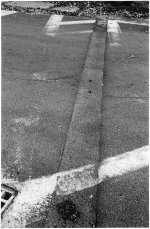WoolenMammoth
Well-known
Since Cowboy Kate has been recently re-published, figured Id bring this up as perhaps a wider audience might have some insight...
Anyone have any idea what film stock the bulk of that book was shot on? Its been driving me nuts lately, more so because the book was originally published in 1964 and there couldnt have been much to chose from... I got to see many of the images in the book on silver prints and its frightening what those prints looked like. The grain structure and contrast is fully what Im after and while its easy enough to do with TMZ its not this look, its too perfect looking.
To be honest, Im not even too overly concerned with what someone did so long ago, whatever film was available then, it sure aint available in the same formula now... Im more curious about what direction to head in to get the smooth yet chunky grain going on, like Haskins was clearly in control of with that series of work. Ive not had too much success getting tri-x to break apart like that. Did they even make tri-x in 1963?
anyhow, wondering if anyone has any thoughts. If you havent ever seen the book, go out of your way to take a peek, there's some moments in there that can redefine some things...
Anyone have any idea what film stock the bulk of that book was shot on? Its been driving me nuts lately, more so because the book was originally published in 1964 and there couldnt have been much to chose from... I got to see many of the images in the book on silver prints and its frightening what those prints looked like. The grain structure and contrast is fully what Im after and while its easy enough to do with TMZ its not this look, its too perfect looking.
To be honest, Im not even too overly concerned with what someone did so long ago, whatever film was available then, it sure aint available in the same formula now... Im more curious about what direction to head in to get the smooth yet chunky grain going on, like Haskins was clearly in control of with that series of work. Ive not had too much success getting tri-x to break apart like that. Did they even make tri-x in 1963?
anyhow, wondering if anyone has any thoughts. If you havent ever seen the book, go out of your way to take a peek, there's some moments in there that can redefine some things...


